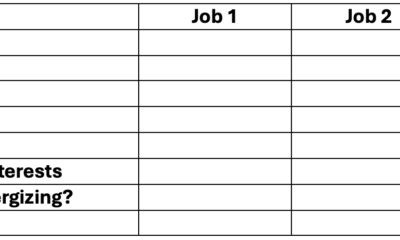Leadership
Beyond the Listening Tour

New CEOs: The Importance of Stakeholder Conversations
Change agents are often celebrated for their ability to disrupt the status quo and drive transformation. In associations, leaders are encouraged to challenge the familiar and embrace innovation. However, implementing change requires more than just a visionary leader—it necessitates the support and buy-in of various stakeholders, including staff, board members, and allies.
Debbie Witchey, the new CEO of the Association for Behavioral Health and Wellness, understands the significance of involving key individuals in the change process. In a recent interview for Associations Now Deep Dives, Witchey shared her approach to navigating organizational change and the importance of stakeholder engagement. She emphasized the value of listening tours and collaboration with the previous CEO during the transition period.
Witchey’s strategy includes a listening tour with board members and staff members to gather insights and identify areas for improvement. However, she also emphasizes the importance of setting clear expectations and establishing herself as the primary point of contact for staff members. This transition period allows for a smooth handover of leadership responsibilities while ensuring continuity and clarity within the organization.
“The benefit of the listening tour is to go in wide open. Nothing is sacred, nothing is protected.”
Julia A. Johnson, Wipfli
Julia A. Johnson, from Wipfli, underscores the importance of approaching these conversations with transparency and openness. By creating a culture of candid communication, incoming CEOs can uncover underlying issues and address them effectively. Johnson suggests that these discussions can reveal organizational themes that require attention, such as communication gaps and decision-making processes.
Additionally, listening tours provide an opportunity to gauge reactions to potential changes and articulate a vision for the organization’s future. Candance Chow, from NextGroup, LLC, recommends using these meetings to share preliminary thoughts and gather feedback on proposed initiatives. By actively involving stakeholders in the decision-making process, leaders can foster a sense of ownership and alignment within the organization.
While listening to stakeholders’ concerns is vital, effective leadership also requires a clear vision and the ability to drive solutions. Ultimately, people want to be heard, but they also look to their leaders for direction. By combining active listening with decisive action, new CEOs can navigate organizational change successfully.

-

 Professional Development1 month ago
Professional Development1 month agoDrawing up your strategy
-

 Personal Growth2 months ago
Personal Growth2 months agoSucceeding as a ‘parentpreneur’: Top tips
-

 Videos2 months ago
Videos2 months agoGreat Leaders INSPIRE Others To Do Great Things
-

 Productivity2 months ago
Productivity2 months agoHow to Increase Remote Work Productivity
-

 Productivity2 months ago
Productivity2 months agoTips for Boosting Work Productivity
-

 Productivity2 months ago
Productivity2 months ago5 Ways to Increase Your Personal Assistant’s Productivity
-

 Leadership1 month ago
Leadership1 month agoHow to Tackle Big Challenges
-
Leadership1 month ago
Cutting Through the Clutter of Internal Communications
















